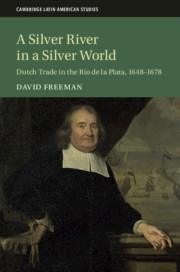Book contents
- A Silver River in a Silver World
- Cambridge Latin American Studies
- A Silver River in a Silver World
- Copyright page
- Dedication
- Contents
- Acknowledgments
- Maps
- Introduction
- 1 The Silver World
- 2 The Silver River
- 3 Golden Connections
- 4 Dutch Ships and Dutch Men on the Río de la Plata
- 5 Conflicting Ownership
- 6 Silver Tongues
- 7 Silver Politics on the Estuary
- 8 The Silver River Runs Dry
- Bibliography
- Index
- Series list continued from page ii
3 - Golden Connections
Governors, Networks, and Contracts
Published online by Cambridge University Press: 18 April 2020
- A Silver River in a Silver World
- Cambridge Latin American Studies
- A Silver River in a Silver World
- Copyright page
- Dedication
- Contents
- Acknowledgments
- Maps
- Introduction
- 1 The Silver World
- 2 The Silver River
- 3 Golden Connections
- 4 Dutch Ships and Dutch Men on the Río de la Plata
- 5 Conflicting Ownership
- 6 Silver Tongues
- 7 Silver Politics on the Estuary
- 8 The Silver River Runs Dry
- Bibliography
- Index
- Series list continued from page ii
Summary
As discussed in Chapter 1, in the early 1650s the international conditions evolved in a way that made possible the expansion of Dutch trade in Spanish America. At the same time, the Río de la Plata underwent changes on a regional level that affected the areas connecting Potosí to Buenos Aires (Chapter 2). In that context, the agency of Governor Baygorri made possible the connections between the Silver World and the Silver River. In this chapter, I discuss how various governors managed trade with foreigners. Although the chapter focuses on Baygorri, the governor during whose administration Dutch trade in Buenos Aires was most significant, his role can only be understood in contrast to his predecessor and successors.
- Type
- Chapter
- Information
- A Silver River in a Silver WorldDutch Trade in the Rio de la Plata, 1648–1678, pp. 61 - 85Publisher: Cambridge University PressPrint publication year: 2020

